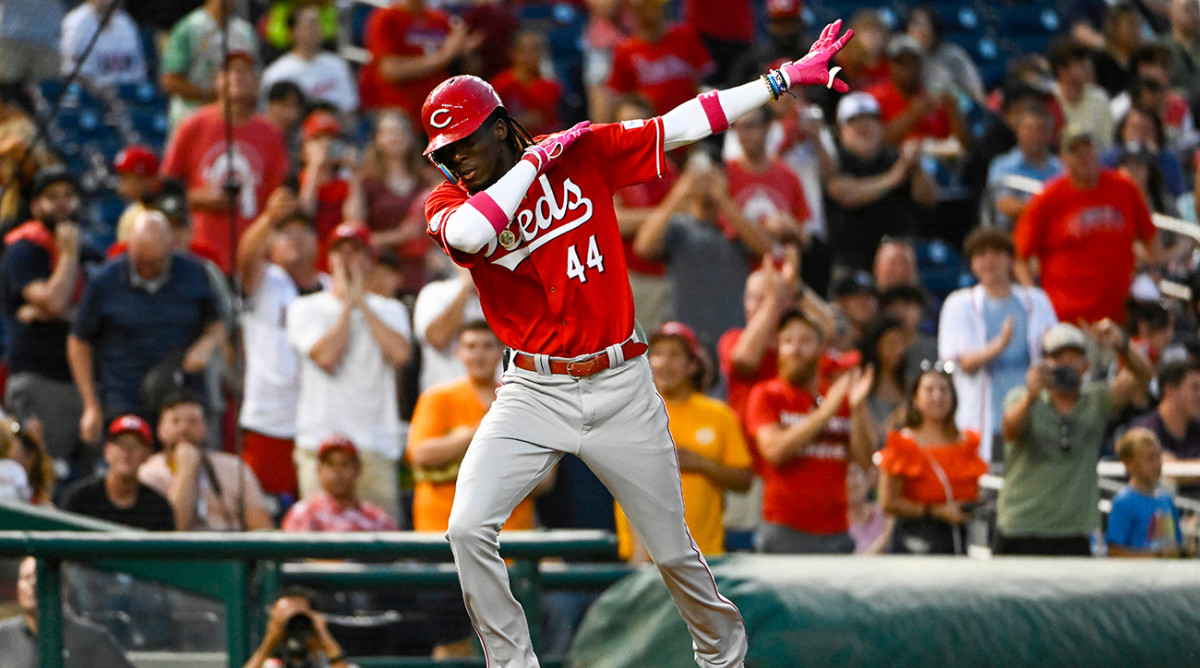SI:AM | Damian Lillard’s Miami-or-Bust Threat

Good morning, I’m Dan Gartland. I’m really excited for Victor Wembanyama’s NBA Summer League debut tonight.
In today’s SI:AM:
🏀 The latest on Damian Lillard
😬 Brooks Koepka’s harsh criticism of a teammate
🩸 A wrestler’s interesting take on blood
If you're reading this on SI.com, you can sign up to get this free newsletter in your inbox each weekday at SI.com/newsletters.
This won’t be resolved any time soon
Damian Lillard’s agent has finally confirmed what has been an open secret since the Trail Blazers star requested a trade last week: He wants to play for only the Heat.
ESPN’s Adrian Wojnarowski reported yesterday that Lillard’s agent, Aaron Goodwin, “has been calling prospective trade partners and warning against trading for his client” and “telling organizations outside of Miami that trading for Lillard is trading for an unhappy player.”
Hours later, Goodwin confirmed what Wojnarowski had reported.
“I do what I should for my client,” Goodwin told the Miami Herald’s Barry Jackson. “Some teams I did call. Other teams have called me. It’s a respectful relationship with most teams. Truthfully, he wants to play in Miami. Period.”
That puts the Blazers in a terrible position. There are plenty of teams interested in trading for Lillard (the Celtics, Sixers and Clippers among them) but by publicly confirming that he’s interested in only Miami, Lillard has torpedoed Portland’s leverage.
It was easy to feel sympathy for Lillard when he first requested the trade. He’ll turn 33 on July 15 and would clearly prefer to spend the final years of his career playing for a contender. And Portland is set up well for the future, with No. 2 pick Scoot Henderson to build around, plus any assets it’ll receive in return for Lillard. But in attempting to force his way to Miami, Lillard has denied the Blazers the ability to maximize their return for him. Chris Mannix reported last week that Portland “is lukewarm” on Tyler Herro, but he’s the best player the Heat could realistically offer in a trade.
The NBA’s player empowerment era has largely been positive. It’s a good thing when employees can seize power from management. But it feels like Lillard has taken things a step too far by demanding a trade to one specific destination. The NBA has a system to allow players to choose where they want to play. It’s called free agency. Lillard could have become a free agent in the summer of 2024, but he chose last year to sign a two-year contract extension through the ’25–26 season with a player option for ’26–27. What’s the point of signing a contract with a team if you’re going to request a trade less than a year later?
So now we wait and see. Will the Blazers give in and trade Lillard to Miami? Or will another team call his bluff and dare him to follow through on his agent’s threat?
Unless Lillard’s primary concern is trading Portland’s gray skies for the South Beach sunshine, there are other equally appealing destinations for him. Jayson Tatum is reportedly hoping the Celtics will bring Lillard to Boston. Teaming with Tatum, Jaylen Brown and a strong supporting cast appears like a better recipe for a championship than joining Jimmy Butler, Bam Adebayo and what remains of the Miami team that made a miracle run to the Finals this year. At the very least, the Celtics and Sixers offer situations that are appealing enough that Lillard wouldn’t refuse to report to his new team. That’s why Mannix believes Lillard will be fine with being traded to any contending team.
The best of Sports Illustrated

- Emma Baccellieri looks at the youth movement behind the Reds’ big turnaround.
- Brooks Koepka made waves by telling Alex Miceli that he thinks his LIV Golf teammate Matthew Wolff “quit.”
- The Rockets made some big moves this offseason, but Chris Herring isn’t convinced that they’ll translate to a return to relevance.
- Justin Barrasso had a great interview with pro wrestler Jon Moxley about the significance of performers bleeding in their matches.
- A 20-year-old LPGA Tour rookie was disqualified from the U.S. Women’s Open after just five holes because her caddie repeatedly broke a rule.
- The Cowboys signed a former MLS player to compete for their kicking job.
- Seats at MLB’s Home Run Derby are in high demand, with tickets to the event topping out at $2800, per SI Tickets.
The top five...
… things I saw yesterday:
5. Jazz guard Ochai Agbaji’s alley-oop in Summer League action.
4. The Blue Jays’ six-run 11th inning after failing to score in the previous 10.
3. Pete Alonso’s laser beam home run.
2. Rose Zhang’s chip on the green at the U.S. Women’s Open.
1. Orioles rookie Gunnar Henderson’s big day (4-for-7, two home runs, five RBIs) in Baltimore’s 14–1 rout of the Yankees.
SIQ
Lisa Leslie, who celebrates her 51st birthday today, was one of the most celebrated high school recruits ever. How many points did she score in the first half of a game on Feb. 7, 1990, that was so lopsided the opposing team quit before the second half.
- 76
- 92
- 101
- 132
Yesterday’s SIQ: On July 6, 1992, MLB commissioner Fay Vincent ruled that four National League teams would be switching divisions, prompting an ultimately successful legal challenge from which club and leading to today’s three-division structure in the AL and NL?
- Cubs
- Pirates
- Cardinals
- Braves
Answer: Cubs. With the Rockies and Marlins set to join the NL in 1993, Vincent proposed division realignment that would send the Braves and Reds from the West to the East and the Cubs and Cardinals from the East to the West.
The league didn’t really have to rejigger the divisions. Both had six teams in 1992, and the Rockies and Marlins would add one team to each division, but Vincent believed that the Braves would be a natural rival for the Marlins if placed in the same division, hence the flip-flop.
Realignment wasn’t a controversial idea—except to one team: the Cubs. Chicago balked at the idea of being moved to the West division because it believed the increased number of late games on the West Coast would lead to smaller television audiences. The fact that the Tribune Co. owned both the Cubs and WGN, the network that broadcast their games, made it a particularly thorny proposition.
The Cubs filed a lawsuit in federal court to prevent the realignment plan and were successful. A judge issued a preliminary injunction July 23, ruling that Vincent “exceeded his authority in ordering the transfer.” An appeal was supposed to be heard Sept. 30, but the two sides agreed to drop the suit and keep the existing division alignment for the 1993 season.
With the restructured two-division setup dead, MLB turned its attention to realigning around three divisions in each league. The new system was approved in September 1993, with the Rangers’ casting the lone dissenting vote. You can’t please everyone.
